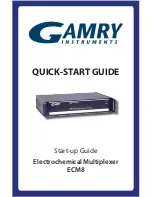
2
•
When engine is running, many parts (such as pulleys, coolant fan, belts, etc) turn at high
speed. To avoid serious injury, always be alert and keep a safe distance from these parts.
•
Before starting the engine for testing or trouble shooting, always make sure the parking
brakes is firmly engaged. Put the transmission in Park (automatic transmission) and Neutral
(manual transmission).
•
Always block the drive wheels. Never leave vehicle unattended while testing
•
Never lay tools on vehicle battery. You may short the terminals together causing harm to
yourself, the tools or the battery.
•
Do not wear loose clothing or jewelry while working on engine. Loose clothing can get caught
in fan, pulleys, belts, etc. Jewelry can conduct current and can cause severe burns if comes
in contact between power source and ground.
•
Always keep a fire extinguisher readily available and easily accessible in the workshop.
Working with Batteries:
Lead-acid batteries contain a sulfuric acid electrolyte, which is a highly corrosive poison and will
produce gasses when recharged and explode if ignited. It can hurt you badly.
When working with batteries, make sure you have plenty of ventilation, remove your hand jewelry,
watch and wear protective eyewear (safety glasses), clothing, and exercise caution.
Do not allow battery electrolyte to mix with salt water. Even small quantities of this combination will
produce chlorine gas that can KILL you!
Whenever possible, please follow the manufacturer's instructions for testing, jumping, installing,
charging and equalizing batteries.
•
Never disconnect a battery cable from a vehicle with the engine running because the
battery acts like a filter for the electrical system.
Unfiltered [pulsating DC] electricity can damage expensive electronic components,
e.g., emissions computer, radio, charging system, etc.
Turn off all electrical switches and components; turn off the ignition before
disconnecting the battery.
•
For non-sealed batteries, check the electrolyte level. Make sure it is covering the
plates and it is not frozen before starting to recharge (especially during winters).

























